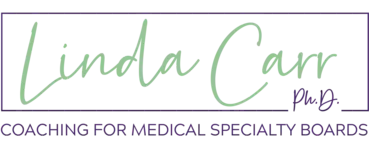
Visualization is a powerful tool for learning, engaging your brain in a way that can spark deeper understanding and memory retention. But visualization isn’t just about seeing–it’s about engaging all your senses. Visualization offers a multisensory feast, engaging not just the eyes but also the mind and body.
Here are 3 learning strategies based on visualization:
1. CONCEPT MAPPING: This strategy involves creating a visual representation of relationships between ideas or concepts. You can use diagrams, flowcharts, or mind maps to show how things connect to each other. This can be helpful for understanding complex topics and identifying key relationships.
2. VISUAL NOTE-TAKING: Instead of taking traditional linear notes, try drawing what you’re learning. This could include using diagrams, sketches, or even doodles to represent key ideas. Visual note-taking can help you to focus on the most important information and remember it better than traditional note-taking methods.
3. MENTAL IMAGERY: This strategy involves using your imagination to create mental pictures of what you’re learning. This can be helpful for remembering details, understanding processes, and making connections between different ideas. For example, if you’re trying to learn about the water cycle, you might imagine water evaporating from the ocean, rising into the clouds, and then falling back to earth as rain.
There are many other ways to use visual aids to improve your learning. Experiment with different techniques to find what works best for you.
Here are some additional tips for using visualization for learning:
- Use colors and shapes to highlight important information.
- Keep your visuals simple and clear.
- Label your visuals so that you can easily understand them later.
- Review your visuals regularly to reinforce your learning.
Overall, visualization can be a valuable tool for many learners, but it’s not a universal magic bullet. The effectiveness depends on individual learning styles, the complexity of the material, and the quality of the visualization itself.
Here are some additional tips for using visualization effectively:
- START SIMPLE: Begin with basic visualizations and gradually increase complexity as you get comfortable.
- MAKE IT PERSONAL: Use imagery that is meaningful and relevant to you.
- ENGAGE MULTIPLE SENSES: Combine visual imagery with other sensory details, such as sounds or textures.
- PRACTICE REGULARLY: The more you use visualization, the better you’ll become at it.
Visualization as a learning tool has its strengths and limitations, and its effectiveness can vary depending on individual learning styles and preferences. Here’s a breakdown:
Strengths:
- Enhances understanding: Visualizing concepts can make them more concrete and easier to grasp, especially for abstract or complex topics.
- Improves memory: Creating mental imagery can strengthen neural connections, leading to better recall and retention of information.
- Boosts engagement: Visualization can make learning more active and immersive, increasing motivation and focus.
Limitations:
- Individual differences: Not everyone learns best visually. Some learners may prefer auditory, kinesthetic, or other learning modalities.
- Requires effort: Effective visualization takes practice and concentration. It’s not a passive learning strategy.
- Dependence on prior knowledge: Building mental models requires some understanding of the underlying concepts first.
Remember, the best learning approach is often a combination of different strategies. Experiment with different techniques and find what works best for you!
Visualization isn’t a magic wand, but it’s a powerful tool in your successful learning arsenal. It clarifies your vision, ignites your motivation, and trains your mind for victory. So, close your eyes, paint your dream onto the canvas of your imagination, and step into the future you desire. Remember, seeing is believing, and believing is achieving.
Start visualizing your goals today and watch your journey to success unfold with newfound clarity, motivation, and an unshakeable belief in yourself. Remember, the future is yours to craft, and the first step is seeing it vividly before your mind’s eye. So, see it, believe it, and achieve it!
__________
Linda L. Carr, Ph.D., Founder/Principal at Coaching for Medical Specialty Boards, is a medical educator and learning specialist who coaches physicians preparing for specialty boards through virtual, one-on-one coaching. Visit www.DrLindaCarr.org to learn more about Linda and her program, her clients’ success, and download her FREE Study Guide.
